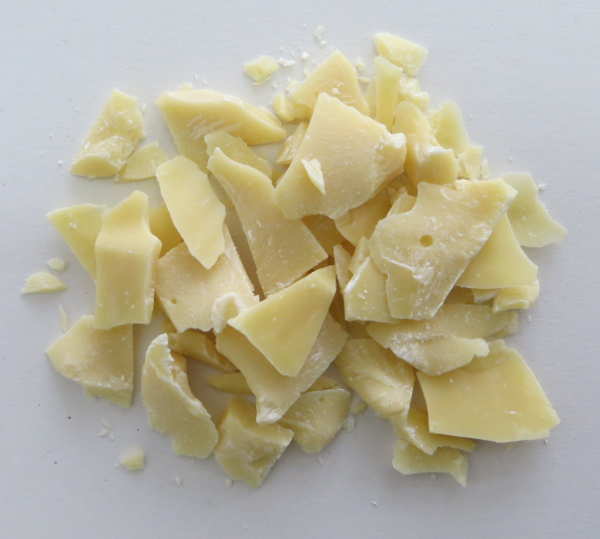

Cocoa butter is commonly known as an ingredient used in lipsticks, soaps, and emollient creams as it is soothing to the skin. Few people know that cocoa butter, as well as being an important ingredient in chocolate recipes and in products for beauty and body care, is also a fat that can be used in cooking as an alternative to butter or margarine.
It can be used as a replacement for butter in traditional dishes. For example, it can be used to flavor the classic Italian dish “potatoes gnocchi”, traditionally cooked with much butter and sage. Just melt some cocoa butter in a pan, with slow fire, add some sage leaves, then raise the fire so that the sage releases its aroma. Cook the gnocchi in water, then add the sauce and cook all together in a pan for some minutes. Serve with some spoons of hazelnuts or almonds, chopped and toasted.
It consists of the natural fat contained in cocoa nibs and it is obtained by pressing, roasting and crushing those seeds. Cocoa beans are extracted from the inside of a large, flesh cocoa fruit, cleaned, roasted and then pressed in hydraulic machinery, oozing forth cocoa butter. After the cocoa butter is extracted, the remaining solids are processed into cocoa powder.
This process separates the thick and creamy butter from the fibrous powder. It is curious that cacao butter and powder, separated in the first cocoa processing steps, are then melted together again to make chocolate. That is, most of the ingredients for chocolate are present in the cacao bean in the first place, but need to go their separate ways in order to come together.
Cocoa butter is naturally gluten and cholesterol free and for this reason it is considered a quite healthy fat. It also contains natural antioxidants: it is naturally rich in Vitamin E as well as a number of other vitamins and minerals. Moreover it has a much higher smoke point if compared to traditional fats, such as butter, margarine, olive oil and other vegetable oils. The smoke point is the temperature level that can change the oil molecular structure, making it unhealthy. That of cocoa butter is 230 ° C, against 130 ° C of butter and 160 ° C of olive oil. So, this means that it is much more unlikely that cocoa butter reaches that level, and becomes dangerous.
Cocoa butter is therefore one of the most stable fats known, a quality that, coupled with natural antioxidants, prevents rancidity. This gives more chances for storage, allowing up to 3 years of storage. It is not very greasy to the touch, solidifies below 20 ° C and melts at approximately the same temperature of the oral cavity, about 35 degrees. This last feature is very interesting, making the dosage of cocoa butter one of the secrets that differentiates the numerous varieties of chocolate on the market.
Until 2000 in many European countries chocolate could not contain any fat except for cocoa butter and possibly milk fat in milk chocolate. In some countries instead (Denmark, Great Britain, Ireland, Sweden, Portugal, Finland and Austria), it was possible to add up to ten percent of other fats. An EU directive (2003), now allows in all EU countries the addition of vegetable fats other than cocoa butter, up to a limit of five per cent of the finished product. But what are these vegetable fats used? Illipe butter, palm oil, fat and stearin shorea robust, shea butter, butter kokum, the kernel of mango and oil coconut. They must be indicated on the label. The manufacturer that wants to emphasize the absence of these fats can write "pure chocolate" label.
Sources:
Insert date: 2015-09-18 Last update: 2015-09-20
Comment
![]()
![]()
Other foods
Authors > Contributor writers > Giovana Stefano